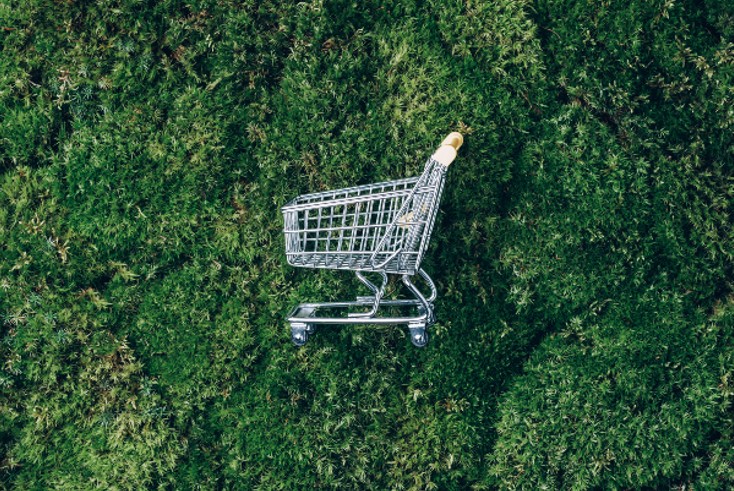It’s advertising’s responsibility to offer a sustainable choice

Opinion: Strategy Leaders
Consumers are looking for green wins, but they may need convincing.
The cost-of-living crisis means people increasingly feel the need to default to the cheapest or most familiar brand, a recent Starcom study has found.
Industry data tells a similar story. People can only worry about so much at once. Ipsos Mori’s Issues Index records that whilst the environment is still a key concern—and people recognise that it is no longer a problem for the future, but for now—it has fallen from 32% in August 2021 to 13% in July 2022, compared to 45% who are concerned about the more immediate crisis of inflation.
We know there is a problem, but it’s a big, very complex problem and there remains an enormous challenge in convincing people to alter their normal consumption habits at the expense of their already heavily stretched bank balances. Starcom’s internal data earlier this year found that 48% feel guilty about how much they consume, and 16% feel guilty all the time. A recent Foresight Factory poll found that 54% feel sustainable options are too expensive, a concern that was consistent across all generations and income brackets.
So the negativity facing consumers is two-fold — guilt at consumption, and shame that we can’t afford to do anything about it.
Remind consumers they have a choice
So we come to the role of advertising and how advertisers need to think differently about their role.
Advertising’s purpose is to remind consumers they have a choice. Why default to the brand you chose last time, or the cheapest or nearest or indeed dearest? All our efforts go towards nudging our potential customers to go the extra mile and invest with our clients instead. Today, however, advertisers have a responsibility to remind themselves that they too are investors at heart, and that the sustainable choice should always be available and on offer.
Advertising is so often accused of being at the heart of fuelling unnecessary consumption. But many advertising campaigns are not about driving consumption but offering consumers a choice. When advertising is at its best, it gives consumers clear emotional and rational reasons to make a better choice. If we focus on this core purpose in the context of sustainability, we then realise that we can remind not just consumers, but clients too, that we all have a choice.
Convincing a consumer or a client to pay extra to minimise waste, partner with a sustainable initiative or indeed offset one’s emissions with an extra fee takes some serious persuading, both in terms of the right language and imagery within the creative, but also the medium it chooses to connect with people in, too.
Choosing sustainable media offerings (incredible OOH billboards that clean the air, magazines that are 100% recyclable, digital advertising that is 100% offset via environmental and relevant charitable and social programmes) is a powerful, if subtle, cue to consumers that the brand is making the right choices by investing in the publishers, programmes, billboards, websites and events that are minimising their impact on the planet. Crucially, we should remind ourselves that this can be done even without a sustainable creative message.
Carbon neutrality is a metric worth adding to our everyday agenda
Whether clients ask for it or not, media agencies should continue to offer clients a choice suggesting sustainable alternatives to plans, recommending an environmental offsetting fee akin to ASBOF, or recommending collaborations that go beyond the norm in addressing sustainable issues. Yes, all the usual metrics of reach, attention, fame, ROI, SOV still apply. But most clients and consumers recognise that aiming for carbon neutrality is also a metric worth adding to our everyday agenda.
The majority of consumers, who according to research agency Trajectory, represent around half of the population, are balancing sustainability alongside other priorities, like value, quality and convenience. They are looking for green wins but may need convincing. And that is where advertising’s persuasive force plays such a fundamental role. The art behind advertising is in shifting perspectives, going the extra mile, and glamorising new behaviours, products and services.
Against the frightening backdrop of the cost-of-living crisis — which in many ways is fuelled by the climate crisis itself — it can feel like a struggle or a distraction to continually push sustainable media options onto the plan. But it’s certainly the bravest course of action that any brand can do today. We don’t know what the future holds, but in these uncertain times, aiming for environmental sustainability is perhaps also the surest way to secure lasting economic and business sustainability.
Heather Dansie is insight director at Publicis Groupe agency Starcom.
Strategy Leaders is our commitment to showcase the media industry’s most important strategy issues and debates, as well as focus on notable ad campaigns and from a media-planning lens.
Sign up for our daily newsletter and receive Strategy Leaders every Thursday.




